Clashes Between Armed Forces, Civilians In Iran’s Khorramabad Leave 15 Injured
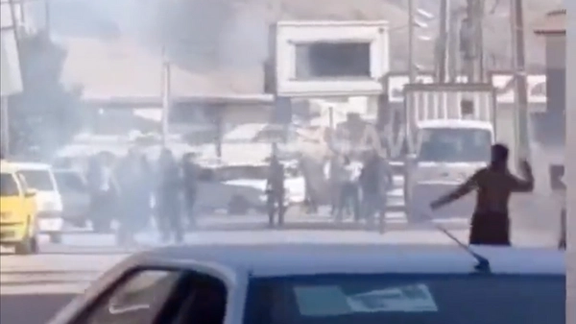
At least 15 citizens were injured and three shopkeepers arrested in clashes between security forces and protesters in the western Iranian city of Khorramabad.

At least 15 citizens were injured and three shopkeepers arrested in clashes between security forces and protesters in the western Iranian city of Khorramabad.
The Free Union of Iranian Workers published a video of the clash between regime armed forces and protesters in the Taluri neighborhood of Khorramabad in Lorestan province on Sunday.
The clashes came after “the armed forces attacked to confiscate electrical devices in a number of shops,” added the union.
There is no further information about the incident so far.
Earlier this month, a large number of people showed up for the funeral service of Mansoureh Sagvand, the former police assistant who defected in the wake of nationwide protests, in a village in her native town of Khorramabad amid high tensions.
The funeral ceremony was held while regime agents closed roads leading to the village. Mourners sang local folklore songs with themes such as ‘time to fight’ and ‘resistance’ while holding placards that called for justice over her death.
Sagvand had said in a message to her friend that she was threatened with death by intelligence officers, emphasizing: "If something bad happens to me, I want everyone know that I did not commit suicide."
Last year, Iran's security forces opened fire on mourners at a cemetery in Lorestan province to mark the 40th-day memorial for a young protester, Nika Shakarami.
The 16-year-old Nika Shakarami’s body was found in suspicious circumstances ten days after she left home to take part in a protest rally against compulsory hijab on September 20.
Iran has been the scene of anti-government protests since the death in custody of Mahsa Amini in September.
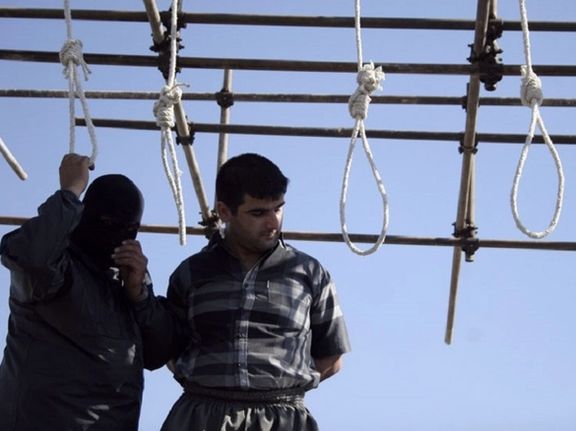
In the first half of 2023, at least 354 people, including six women, have been executed in Iran.
The Norway-based Iran Human Rights (IHRNGO) said Monday that Baluch minorities accounted for 20% of all executions. The number of drug-related executions rose 126% from the same period last year to reach 206.
As the Islamic Republic of Iran's execution machine accelerates, IHRNGO once again called on UN Member States to take action against the state's killings of death row prisoners, especially those funding joint projects with the regime.
“The death penalty is used to create societal fear and prevent more protests. The majority of those killed are low-cost victims of the killing machine, drug defendants who are from the most marginalised communities," the group's director, Mahmood Amiry-Moghaddam, said.
With many cases of executions not officially reported, the actual number is undoubtedly higher.
Earlier, the Oslo-based Iran Human Rights Organization said Iran executed 142 prisoners in May, hitting a dark record even for the Islamic Republic and the highest monthly executions since 2015, averaging five people hanged each day.
As the execution wave shows no signs of slowing, protests continue across the country, only fueled by the relentless crackdowns.

The court session of Iranian rapper Toomaj Salehi, arrested for support of the nationwide uprising, was held in Esfahan (Isfahan) on Sunday.
The 33-year-old rapper, violently arrested in late October, faces the death penalty for charges of 'corruption on earth'.
Toomaj salehi’s lawyer, Amir Raisian, said the court session was held behind closed doors and that the verdict will be announced within one week, explaining that he objected to six issues in Toomaj’s case, but the court only accepted one.
The rapper - an artist mostly known for his protest songs about Iran's social issues and injustice by the government - is accused of dissemination of lies through publishing tweets which is considered as an example of corruption of earth, a loose regime term to suppress opposition.
His interview with Canada’s CBC in which he called the regime a mafia "ready to kill the entire nation ... in order to keep its power, money and weapons", is also considered “cooperation with a hostile state”, as Canada is seen by Isfahan court as a hostile government.
His other charges are insulting the founder of Islamic Revolution Ruhollah Khomeini and Supreme Leader Ali Khamenei.
Raisian also stated that the court gave him only half an hour of time to defend his client who has been in prison in the last eight months.
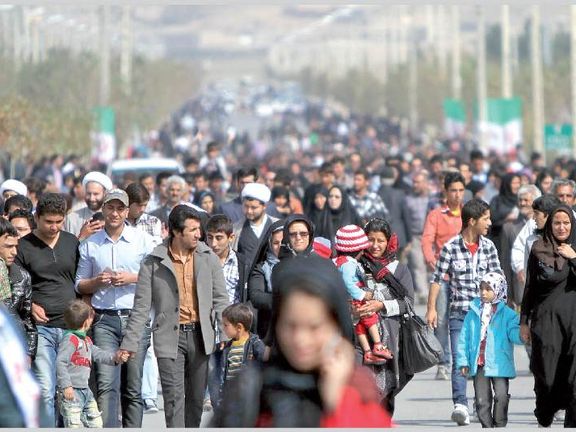
An Iranian sociologist who was an adviser to reformist President Mohammad Khatami (1997-2005), says Iranians perceive the current power structure as an alien entity.
"When the government is perceived as a stranger, the society cannot tolerate its shortcomings." Hossein Valeh said in an interview with Roiuydad24 on Saturday. The government has lost trust because of its aversion to being inclusive, he added.
What is worse is that "The regime has widened the gap between itself and the nation instead of trying to fill it." It has become less attentive to popular demands.
Pervasive political instability in Iran began in 2017, when after years of deteriorating relations with the West and international sanctions, the economy became stagnant. Anti-regime protests that started in December of that year in fact never stopped and in September 2022 millions of disenchanted people came out into the streets nationwide, posing the most serious challenge to the clerical regime in four decades.
Valeh, a former diplomat and a current assistant professor at the Department of Philosophy of the Shahid Beheshti University in Tehran, also told Rouiydad24: "Generally, when there is a divide between the government and the nation, the country becomes polarized."
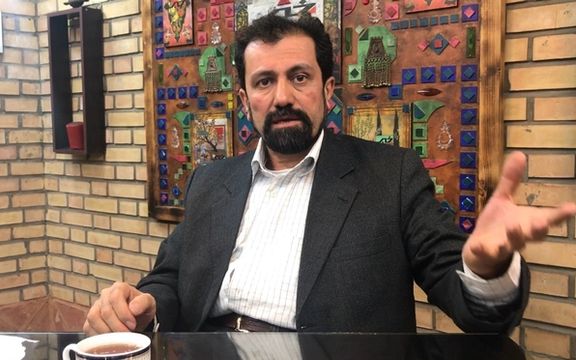
"In such a situation, no one hears the voice of truth and instead, everyone will listen to those who reduce the other side to the level of an enemy," Valeh said, adding that each side perceives any positive news about itself as a fact and any negative statement as a lie without bothering to establish the truth."
The sociologist maintained: "The gap between the government and the nation is currently deep and wide. As a result, we tend to believe any fake news which supports our point of view or rules out the other side's opinion." He added: Maciavelli has taken over our collective unconscious."
Under these circumstances expectations from the government will rise. The people will minimize its achievements and maximize its shortcomings in their perceptions.
He explained that there are accumulated divides in Iran based on religious versus non- religious, traditional versus modern and liberal versus despotic dichotomies. Valeh added that since the 18th century, this accumulated dichotomies have been the driving force of political developments while also creating social conflicts.
The people's distrust of the government will increase the cost of governance and make progress difficult. It will eventually erode the government's legitimacy altogether. Meanwhile, in the absence of public trust, the government cannot make up for its inefficiency.
Particularly dangerous is the divide between the very young generation and the aging clerics supported by the Revolutionary Guard who try to keep the society within the bounds of their isolationist religious ideology.
Along the same line, highlighting the divide between the state and the nation, former government spokesman Ali Rabiei wrote in Etemad Online that it appears there is a tendency in the government to oppose people's happiness. "Regrettably the government has forgotten the events that took place during the protests in the fall of 2022, and that is dangerous.
He pointed out that the government tends to ignore all the explanations and reasons that have been highlighted for last year's events, and it does not understand the people's concerns about the present and the future. The result, he said, is an unhappy and frustrated society.
Rabiei added: "The political depression reveals itself as lack of interest in political participation within the system and a tendency to protest."

The government is threatening families of protesters who were killed in the Iranian uprising not to hold birthday ceremonies at their loved ones’ graves.
The past few days marked the birthdays of several of the most iconic protesters who were either shot dead by security forces, such as Mahdis Hosseini and Peyman Manbari, executed on trumped up charges such as Saeed Yaqoubi, or beaten to death such as 16-year-old Sarina Esmailzadeh whom so many have come to cherish.
Iranian social media is full of posts that share a common structure, all mentioning the name of a dead protester and what their age would be if they were alive on their birthdays.
While Iranians on social media are paying tribute to them as “the young and enlightened generation of Iran,” the authorities have put pressure on their families to prevent gatherings for their birthdays fearing larger antiregime events.

Sarina Esmailzadeh died on the way to hospital after being severely beaten in the head with batons during the early days of nationwide protests following the death in custody of 22-year-old Mahsa Amini. She had joined a protest in Karaj, a large city half an hour from the capital Tehran, on September 21. Regime officials claim she jumped from a neighbor’s rooftop and killed herself. They insist her death was unrelated to protests, but the nature of her injury and death was verified by Amnesty International.
The 16-year-old YouTuber, whose funeral ceremony and the 40th day after her death turned into large demonstrations, was among the first martyrs of the Iranian uprising and would have become 17 today if the Islamic Republic was not in power in Iran. Her name is now a trendy hashtag on twitter with tens of thousands of people talking about her or her video blogs on her birthday.
Sarina, who sang Hozier’s 2013 hit song on a family road trip to the historic city of Kashan in her first vlog on YouTube titled ”My First Vlog!”, has a trove of posts about Iranian teens and the problems people face in the society.
"Iranian teenagers are no longer the teenager of 20 years ago. They are aware of the situation in the world and ask themselves what they should have less than American teenagers," she said in of her whimsical yet witty videos after pointing out that the people in Iran only expect welfare and prosperity.
Former political prisoner Hossein Ronaghi said all the Iranian nation seeks justice for Sarina, calling on people to honor her and keep her memory alive however they can.
Mahdis Hosseini, another teenager would have also turned 17 on Friday if she was not injured by bullets during a protest in the northern city of Amol on September 21. She went into hiding for a couple of weeks without receiving hospital care, for fear of not being arrested. Two days after she returned home, she was left alone for several hours, and when her mother returned, she found her dead body.

Peyman Manbari, who would have turned 26 on Saturday, was killed during a rally in the Kurdish-majority city of Sanandaj in October. His family and friends had planned to gather at his grave but had to cancel under threats and pressure by Iran’s intelligence agencies.
Agents contacted the Manbari family and “told them that they don't even have the right to have a birthday for him in their own home," said Fatemeh Heydari, who lost her brother Javad in a crackdown on a protest rally in the city of Qazvin. “How many young lives, how many grieving families, how much endless sufferings are enough to satisfy your criminal nature so that you stop taking the lives of our loved ones?” she asked.

If not executed, Saeed Yaghoubi's 38th birthday was also on Saturday. Saeed was hanged along with Saleh Mirhashemi and Majid Kazemi in May after they were convicted over the death of two IRGC Basij militia members and a police officer in protests in November.
Human rights campaigners say they were tortured into confessions, and there was no reliable evidence against them.
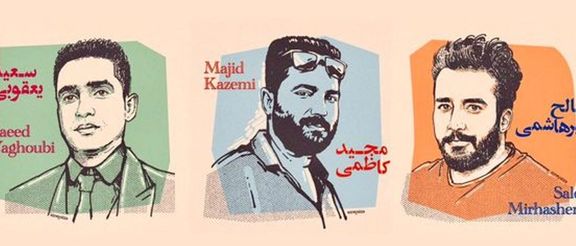
Leaked audio from police radio chatter from the night the three regime agents were killed indicates that they were shot by friendly fire of plainclothes forces. The victims had alibis, with the family of one of the victims saying there is CCTV video footage of their son at work.
According to the cousin of one the executed protesters, "the family of Saeed Yaghoubi (Yaqoubi) was not allowed to be near his grave on his birthday."
Iran’s exiled prince Reza Pahlavi also tweeted in their honor, decrying “Khamenei’s child and youth-killing regime.” “The memories of these brave children of Iran are eternal," he added.
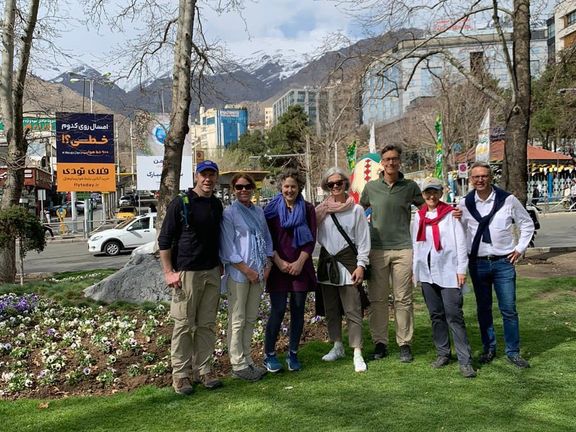
Iran’s IRGC-affiliated Fars news agency slammed the outings of ambassadors and their families in public without mandatory hijab.
The hardline website on Sunday demanded that the Ministry of Foreign Affairs deal with the diplomats who do not obey the Islamic dress code.
Fars published photos of three tourists in a car with diplomatic license plates in Khorramabad, western Iran, saying these people included a man wearing short pants and two women without headscarves.
“Removing hijab by the ambassadors and their wives is not unprecedented. For example, during Nowruz this year, the envoys of the United Kingdom, the Netherlands and Denmark broke the laws of our country by walking with their wives who were not covered with veils on Valiasr Street in Tehran and then published the pictures on social media,” added Fars.
Frank Molen, the Netherland’s Ambassador to Tehran, published some photos of his excursion in the Iranian capital along with some colleagues in March.
Fars called such moves "mischievous" behavior that are "in non-conformity with diplomatic rules" claiming that they are supporting the “riots” in Iran.
Fars also launched a petition asking its audience to sign to put pressure on the foreign ministry to deal with the issue.
Four decades after the Islamic Republic made hijab mandatory, women are increasingly appearing in public in regular clothing such as colorful dresses and with no headscarf covering their hair.
Since the death of the 22-year-old Mahsa Amini in the custody of morality police and the protests that engulfed the country for months many women have discarded their headscarves altogether and vowed never to wear it again.